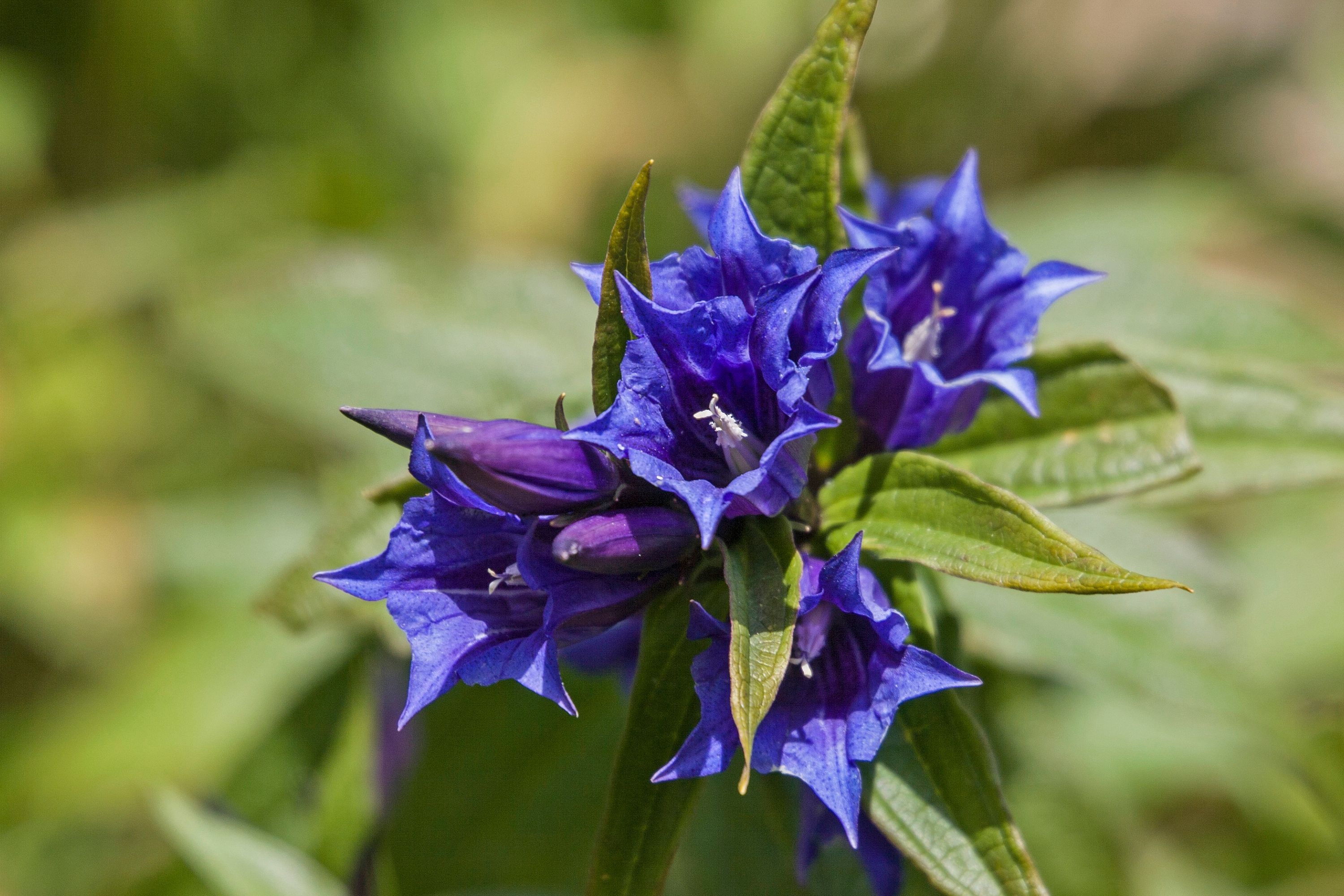Willow gentian
(Gentiana asclepiadea)

Description
Gentiana asclepiadea, also known as willow gentian, is a species of flowering plant in the Gentianaceae family. It is native to Europe and Asia, where it grows in wet meadows, marshes, and along riverbanks. The plant is known for its attractive blue-purple flowers and medicinal properties. In this article, we will explore the various aspects of Gentiana asclepiadea, including its taxonomy, morphology, distribution, ecology, cultivation, and medicinal uses. Taxonomy and Nomenclature The genus Gentiana comprises approximately 400 species of flowering plants, distributed worldwide, mostly in the temperate regions of the Northern Hemisphere. Gentiana asclepiadea belongs to the sect. Ciminalis and is closely related to Gentiana pneumonanthe. The species name, asclepiadea, comes from the Greek word "Asklepios," the god of medicine, due to its medicinal properties. Morphology Gentiana asclepiadea is a herbaceous perennial plant that can grow up to 1 m in height. It has a slender stem that is often reddish-brown and is mostly unbranched. The leaves are arranged in opposite pairs and are lanceolate to elliptic in shape. They are dark green, shiny, and can grow up to 15 cm long and 3 cm wide. The flowers of Gentiana asclepiadea are showy and attractive. They are solitary and terminal, with a bell-shaped corolla that is blue-purple in color, occasionally pink or white. The flowers are 3-5 cm long, with five petals that are fused into a tube, and five lobes that flare outward. The flowers appear in mid to late summer and are pollinated by insects, particularly bumblebees. Distribution and Ecology Gentiana asclepiadea is native to Europe and Asia, where it grows in wet meadows, marshes, and along riverbanks. It can be found in many countries, including Austria, Belgium, Czech Republic, France, Germany, Italy, Poland, Romania, Russia, Slovakia, Switzerland, and Ukraine. Gentiana asclepiadea is a typical species of the subalpine zone and can grow at altitudes of up to 2,000 meters. It prefers moist and slightly acidic soils, rich in organic matter, and requires a lot of sunlight. The plant is sensitive to drought and does not tolerate excessive moisture. Cultivation Gentiana asclepiadea is a popular garden plant due to its attractive flowers. It is easy to grow and can be propagated by seed or division. The plant prefers a sunny location and moist, well-drained soil. It is hardy to USDA zones 4-8 and requires no special care. Medicinal Properties Gentiana asclepiadea has been used in traditional medicine for centuries due to its medicinal properties. The plant contains a variety of biologically active compounds, including bitter glycosides, xanthones, flavonoids, and iridoids. The bitter glycosides, particularly gentiopicrin, are responsible for the plant's bitter taste and are believed to stimulate the production of digestive juices and enzymes, thus aiding digestion. The xanthones, on the other hand, have been shown to possess anti-inflammatory, antioxidant, and antimicrobial properties. Gentiana asclepiadea has been used to treat a variety of ailments, including dyspepsia, loss of appetite, nausea, liver and gallbladder disorders, fever, and infections. It has also been used as a tonic and aperitif.
Taxonomic tree:







